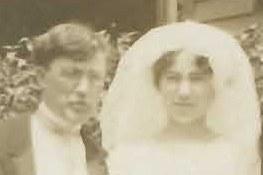If you are researching a family name such as Smith or Jones,
you have my sympathies. While seeking the surname Kelly seems difficult—it is,
after all, one of the top one hundred surnames in the United States—it
is nowhere near as difficult as the challenges you face.
I do, regardless, wish to take this moment to snivel. After
all, researching the Kelly family isn’t exactly a piece of cake.
Keep in mind, first of all, that my end goal in all of this
is to ascertain where our family’s Irish roots originally grew, deep in the
motherland. I do, remember, hope to someday go back there and explore those
very locations. That shred of hopeless romantic still hidden deep inside me
yearns to explore those same proverbial cobblestone roads our family’s
ancestors once walked.
That, in fact, is one of the barriers to researching the
Kelly family. While the surname is in the top seventy names for our current
homeland, it rockets up to claim the number two spot, once you consider Ireland,
itself. And within the country of Ireland, the name is widespread, perhaps having multiple origins.
No wonder I’m having problems making these family lines
connect.
So when I begin at the spot where I last found our Kelly
family—Fort Wayne in Allen County, Indiana, upon the marriage of Catherine Kelly to John Kelly Stevens—I ponder whether there were more Kellys, already in
town, to draw Catherine’s family to that specific spot deep within the United
States of the time.
Could there be relatives of this Kelly family who preceded
them in coming to Fort Wayne?
What drew them to this town, instead
of to multiple other possibilities?
Or were the other Kelly families in Fort Wayne not related at all?
Since Catherine, herself, saw her name ridden with so many spelling
variations—and since her given name was also so common—to test my questions, I
prefer to employ her mystery brother Timothy, the one who disappeared from the
family record by the time of the 1880 census.
But there were even too many Timothys in the Fort Wayne census for
that same year of 1870 in which we last saw his record.
There was, for example, one other Timothy in Fort Wayne, apparently,
but he appeared to be the wrong age for comparisons—born about 1836 rather than
1860.
Then, too, there was yet another Timothy. Admittedly, his
surname was spelled Kelley in the 1870 census, but then, so was Catherine’s
surname. Born in Ireland
in 1830, this Timothy would also be much too old to match our Timothy’s record.
Tantalizingly enough, though, his household contained daughters Catherine and
Mary, just as did our Catherine Kelly’s family. Along with that, there was a
son named Timothy in this household, too—showing, in one way, how often those
same names seemed to repeat themselves in these Irish immigrant families.
Even though the dates were off, we’ll find this second family may
be a keeper, however—but I’ll save that story to puzzle over later.
We’re still left with the question of how certain the
possibility may be that there were other Timothy Kellys of the same age, also
residing in Fort Wayne
between the 1870 and 1880 censuses.
And, more importantly, where did our Timothy Kelly go?




